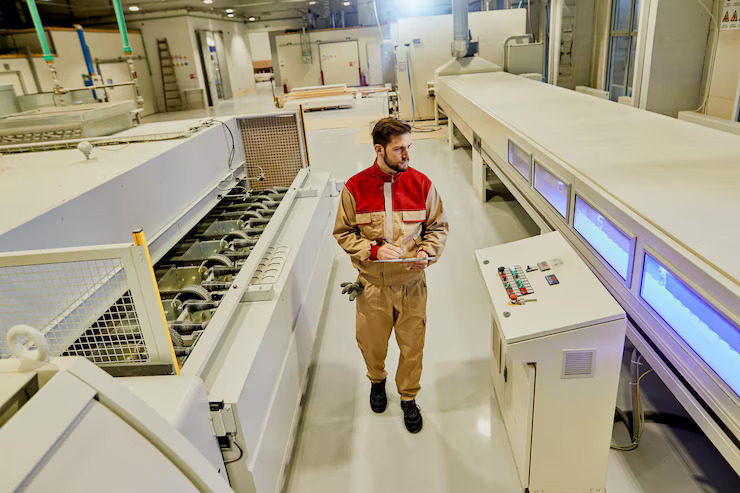Keeping your manufacturing operation running smoothly starts with one critical factor: effective asset maintenance. In a world where efficiency drives competitiveness, every machine, tool, and system must operate at peak performance. But can you really stay ahead of every breakdown? Absolutely—if you have a smart, proactive maintenance strategy. Let’s discuss how to strengthen your approach to asset maintenance and avoid unexpected downtime, costly repairs, and productivity loss.
Why is Asset Maintenance Needed?
Gone are the days when maintenance meant waiting for something to break and then rushing to fix it. Today, asset management in manufacturing is a forward-thinking discipline powered by technology, data, and strategic planning.
Leading facilities are moving away from reactive maintenance and the costly “fix-it-when-it-breaks” mindset. And with unscheduled downtime costing manufacturers over $50 billion annually, the shift to proactive strategies isn’t just smart—it’s essential.
The Three Pillars of Modern Strategy
1. Preventive Maintenance
Scheduled maintenance activities are performed regularly to prevent failures. Examples include oil changes for cars and industrial equipment.
2. Predictive Maintenance
By employing sensors, data analytics, and monitoring technologies to anticipate when equipment could fail, so you can get ahead of issues before they become real and costly problems.
3. Corrective Maintenance
Sometimes referred to as reactive maintenance, this entails fixing things after something has failed. While you can’t eliminate this entirely, the goal is to minimize it.
Building Your Asset Maintenance Strategy
Building an efficient asset maintenance strategy doesn’t happen overnight—but the long-term payoff is well worth the investment. Here’s how to lay the foundation for a system that minimizes downtime, extends asset life, and boosts overall productivity:
Begin with Asset Lifecycle Management
Think of asset lifecycle management as the big-picture view of your equipment—from acquisition to retirement. This holistic approach helps you make smarter, data-driven decisions about when to maintain, upgrade, or replace assets, ultimately maximizing performance and ROI.
The average asset lifecycle contains a number of stages:
- Planning and acquisition
- Installation and commissioning
- Operation and maintenance
- Performance optimization
- End-of-life disposal or replacement
Knowing where every piece of equipment stands in its lifecycle will help you make more intelligent and budget-friendly maintenance choices.
Implement a Computerized Maintenance Management System
Here’s where technology can be most useful. A computerized maintenance management system (CMMS) is like having a super-organized assistant who never forgets anything and can track thousands of details simultaneously.
The Best CMMS software will assist you in:
- Scheduling and tracking maintenance activities
- Managing work orders and inventory
- Storing equipment history and documentation
- Generating reports and analytics
- Optimizing maintenance schedules
Maintenance of Critical Industrial Equipment
Industrial equipment represents a significant investment—often reaching millions in large-scale operations. Protecting that investment through consistent, strategic maintenance isn’t optional—it’s essential for ensuring long-term profitability and operational resilience.
Various types of equipment demand different maintenance methods:
- Rotating Equipment (motors, pumps, compressors)
These need vibration monitoring, oil sampling, and thermal scanning to identify issues early.
- Static Equipment (piping, vessels, tanks)
Systematic checks for corrosion, leaks, and structural soundness are priorities here.
- Control Systems (PLCs, SCADA, instrumentation)
Software updates, calibration, and backup processes are vital for these brain centers of your operation.
Why Is Facility Maintenance Important?
While we tend to concentrate on production machinery, don’t neglect facility maintenance. Your building systems—HVAC, lighting, electrical, and plumbing—all underpin your manufacturing operations. A malfunctioning air conditioning system can bring production to a standstill as easily as a faulty machine.
Effective facility maintenance includes:
- Regular HVAC system servicing to maintain proper environmental conditions
- Electrical system inspections to prevent power issues
- Roof and building envelope maintenance to protect equipment from weather
- Safety system testing to ensure compliance and worker protection
Moving Beyond Reactive Maintenance
While reactive maintenance will always be part of your strategy, today’s manufacturing operations can’t depend on it as their first line of defense. Costs are just too high, both in direct repair costs and lost production.
Reactive maintenance is a problem for these reasons:
- Unscheduled downtime interrupts production schedules, leading to missed deadlines and customer dissatisfaction.
- Emergency repairs are typically more expensive due to labor premiums, expedited parts, and unplanned resource allocation.
- Secondary damage can occur when a minor issue escalates into a major equipment failure.
- Spare parts are not always readily available, which can further delay repair times.
- Technicians are forced into crisis mode, increasing the risk of errors and safety hazards.
- Frequent breakdowns reduce equipment lifespan, leading to premature asset replacement and higher capital costs.
Best Practices for Maintenance Management
Develop Clear Maintenance Procedures
Document everything. Your maintenance techs should have written procedures for recurring jobs, which need to be updated periodically based on experience and manufacturer suggestions.
Invest in Training
Your maintenance personnel are only as valuable as their expertise and knowledge. Ongoing training in new technologies, safety protocols, and troubleshooting methods improves equipment reliability and safety.
Maintain Proper Inventory
Having the right spare parts available when you need them is a true blessing, but so is avoiding excessive inventory that ties up capital. Use your CMMS data to optimize inventory levels.
Monitor Key Performance Indicators
Performance measures such as Overall Equipment Effectiveness (OEE), Mean Time Between Failures (MTBF), and maintenance cost as a percentage of replacement value allow you to measure the health of your maintenance program.
The Technology Revolution in Maintenance
A technological revolution is transforming the world of maintenance and the way we care for assets. Equipment conditions can be monitored 24/7 through Internet of Things (IoT) sensors, and failures can be anticipated with greater precision through artificial intelligence, and mobile technology enables technicians to access data and update records in real-time.
These technologies have the power to enhance your maintenance outcomes significantly—but only when thoughtfully planned and seamlessly integrated into your existing processes.
Big Picture
Having the right maintenance strategy and tools is a great start—but they’re not enough on their own. The most effective operations foster a culture where every team member values asset care and takes ownership of equipment performance.
For example,
- Operators who conduct routine maintenance activities and report anomalies
- Supervisors who facilitate maintenance activity and are aware of its significance
- Management that ensures proper provision of resources and identifies excellent maintenance performance
- Technicians who are proud of what they do and keep updating their skills
To overcome these challenges and achieve peak performance, you need the right tool—one built specifically for modern maintenance demands. That’s why Azzier was developed through years of industry insight and innovation. It delivers powerful features and resources to help you manage your assets with confidence and precision.

FAQs
What is asset management in manufacturing?
It’s tracking and optimizing all your machines and equipment to get the best performance and value.
What is asset maintenance?
It’s the regular care and repairs needed to keep equipment running well.
How do you maintain an asset?
Check it regularly, fix issues early, follow a maintenance plan, and keep records.
What’s the difference between asset management and asset maintenance?
Asset management is the big-picture strategy; asset maintenance is the hands-on work to keep things running.




